Community Studies Publications
The Cohen Center for Modern Jewish Studies (CMJS) and Steinhardt Social Research Institute (SSRI) at Brandeis University have deep expertise in research methods, theory, policy, and practice regarding US Jewish identity and engagement. Our work is distinguished by cutting-edge application of social science methods and keen attention to the needs of the community. Our approach utilizes a set of validated methods, applied in innovative ways, to collect, analyze, and report accurate and actionable data that informs community planning. Our community studies are designed to open new doors to understand and animate Jewish life.
Reports
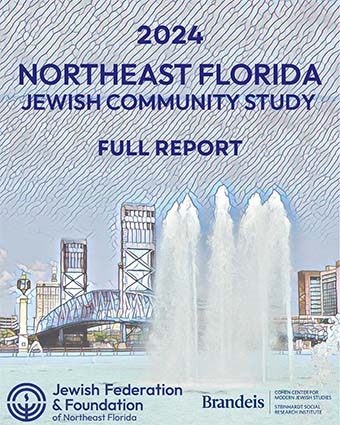
September 2025
The 2024 Northeast Florida Jewish Community Study creates a portrait of the characteristics, attitudes, and behaviors of the Jewish community in Northeast Florida. The study is based on an analysis of data collected from 846 eligible households between April and June 2024. We found the community has grown rapidly, with one quarter of all Jewish adults having moved to the area within the previous five years.
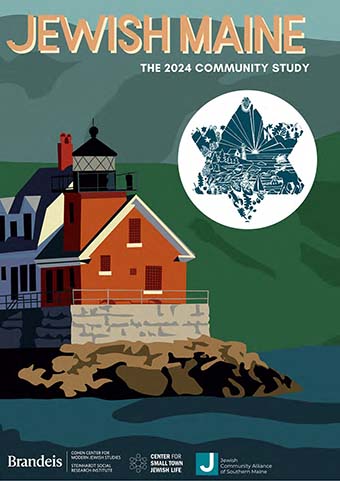
June 2025
Jewish Maine: The 2024 Community Study is the first ever in-depth assessment of the size and characteristics of the Jewish community throughout Maine, and the first study to cover Southern Maine since 2007. The study provides a comprehensive portrait of the state's 19,000 Jews; their families; their Jewish attitudes, affiliations, and behaviors; their health and financial well-being; and other measures of their engagement in Jewish life.
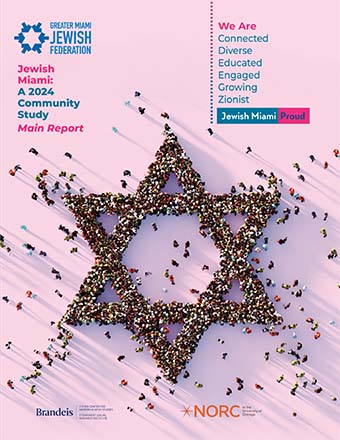
April 2025
Jewish Miami: A 2024 Community Study provides a snapshot of today’s Jewish population in Miami and considers trends and developments in Jewish life and engagement. This study is based on an analysis of data collected from 2,686 eligible households between February 5 and June 14, 2024. The study found that there are 69,700 Jewish households in the Miami Jewish community. These households include 170,300 individuals, of whom 130,100 are Jewish. The Jewish population comprises 5% of the total Miami-Dade population, and Jewish households make up 8% of all households in Miami-Dade County. Nearly one quarter of Miami Jewish adults have moved to the area in the past decade, and one third of Jewish adults were born outside of the United States. The share of Miami Jews who are Orthodox is 13%, and nearly half of Miami Jewish children (46%) reside in Orthodox households.
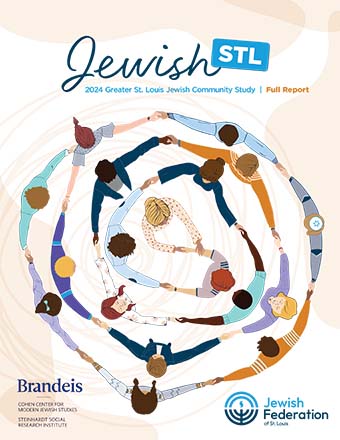
March 2025
The 2024 Greater St. Louis Jewish Community Study creates a portrait of the characteristics, attitudes, and behaviors of the Jewish community in Greater St. Louis. The study is based on an analysis of data collected from 1,771 eligible households between January and April 2024. We found the community is undergoing both reurbanization and exurbanization, with more than one third of households living in the City of St. Louis or outlying areas, farther away from the longstanding suburban center of institutional life.
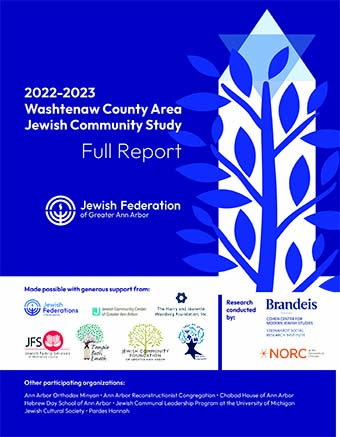
April 2024
The 2022-23 Washtenaw County Area Jewish Community Study provides a snapshot of today’s Jewish population in Washtenaw County and considers trends and developments in Jewish life and engagement. This study is based on an analysis of a rich set of data collected from 955 eligible households between November 2022 and January 2023. In interpreting the data, it is important to bear in mind the study represents the characteristics and views of community members at that time. During that period, the restrictions of the COVID-19 pandemic were gradually being lifted. Data were also collected well before the Israel-Hamas war that began in October 2023 and the ensuing rise in antisemitism in the United States. It is likely that attitudes about Israel, concerns over antisemitism, and other markers of Jewish identity shifted from the time of data collection to the time that this report is being written.
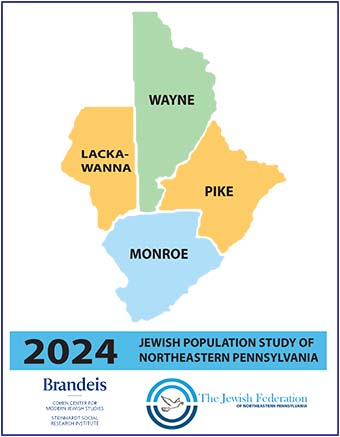
April 2024
The 2024 Jewish Population Study of Northeastern Pennsylvania is the first ever in-depth assessment of the size and characteristics of the Jewish community of Lackawanna, Monroe, Pike, and Wayne Counties in Pennsylvania. This study offers a comprehensive depiction of the 5,500 Jews in Northeastern Pennsylvania, delving into their families; their Jewish attitudes, behaviors, and affiliations; their health and financial well-being; and measures of their engagement in Jewish life.
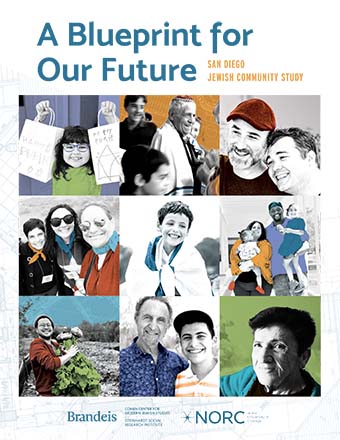
November 2023
A Blueprint for our Future: The 2022 San Diego Jewish Community Study provides important data about the San Diego Jewish community that can be used by communal organizations and their leadership to design programs and policies that support and enhance Jewish life. This report is based on data collected from 2,104 Jewish households in San Diego between June and September 2022. Survey respondents were randomly selected from all households in Greater San Diego.
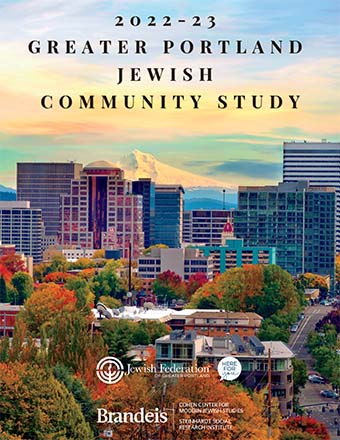
June 2023
The 2022-23 Greater Portland Jewish Community Study is the first in-depth assessment of the size and characteristics of the Jewish community in Greater Portland and Southwest Washington since 2009. The study also includes a separate mini-report for Lane County, the first scientific study ever conducted of the Jewish community in the Eugene area. The study provides a comprehensive portrait of the 56,600 Jews in Greater Portland and Southwest Washington; their families; their Jewish attitudes, affiliations, and behaviors; their health and financial well-being; and other measures of their engagement in Jewish life.
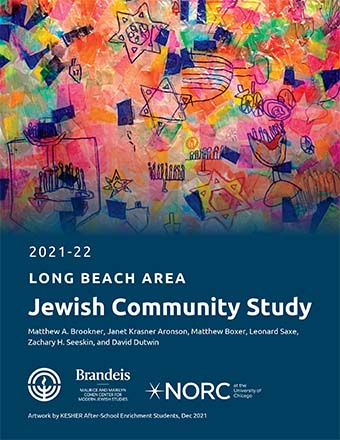
May 2023
The 2021-2022 Long Beach Area Jewish Community Study provides a snapshot of the community and the ways in which members of Long Beach's 17,700 Jewish households engage with Jewish life. The study describes the size and characteristics of the Jewish population and provides data that will effectively guide Jewish organizations as they plan for the next decade serving their community.
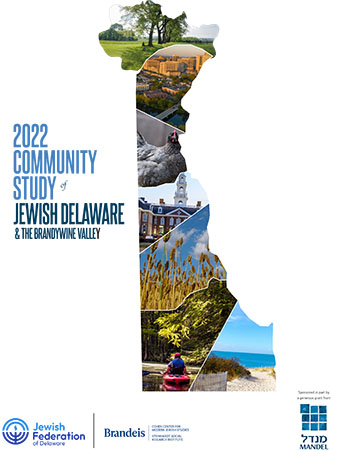
February 2023
The 2022 Community Study of Jewish Delaware and the Brandywine Valley is the first in-depth assessment of the size and characteristics of the Jewish community in Delaware since 1995, and the first to include a section of the Brandywine Valley in Pennsylvania. The study provides a comprehensive portrait of the community's 25,900 Jews; their families; their Jewish attitudes, affiliations, and behaviors; their health and financial well-being; and other measures of their engagement in Jewish life.
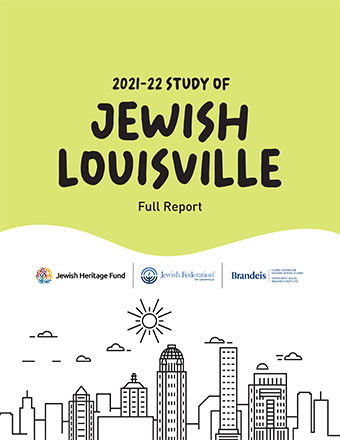
September 2022
The 2021-22 Study of Jewish Louisville provides a comprehensive portrait of the community's 14,200 Jews; their families; their Jewish attitudes, behaviors, and affiliations; their health and financial welfare; and other measures of their engagement in Jewish life. Findings should help the Louisville Jewish community make critical decisions about the next decade of Jewish life in the region.
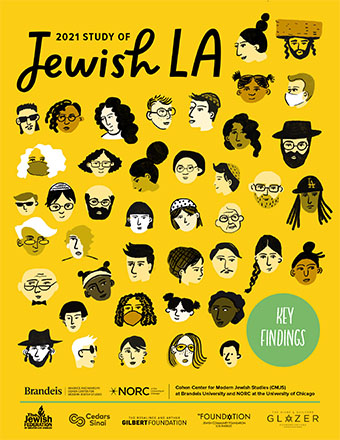
June 2022
The Los Angeles Jewish community is the 2nd largest federated Jewish community in the United States. Its size and diversity make it unique. The community includes 565,000 Jewish individuals living in nearly 300,000 households. More than 175,000 non-Jews live in households with adult Jews. The community’s diversity is reflected in part by the large number of individuals who are immigrants or children of immigrants. In addition to other markers of personal identity, diversity also encompasses varied expressions of Jewish identity and engagement with Jewish life.
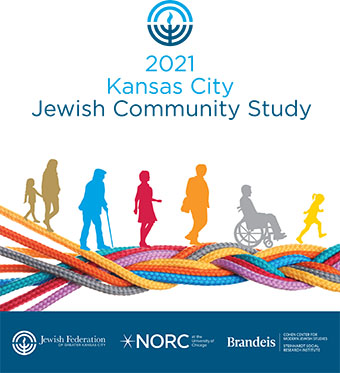
March 2022
The 2021 Greater Kansas City Jewish Community Study is the first in-depth examination of the size and characteristics of the Jewish community in the Kansas City-area since 1985. The study provides a comprehensive portrait of the community's 22,100 Jews; their families; their Jewish attitudes, behaviors, and affiliations; their health and financial welfare; and other measures of their engagement in Jewish life. Findings should help the Greater Kansas City Jewish community make critical decisions about the next decade of Jewish life in the region.
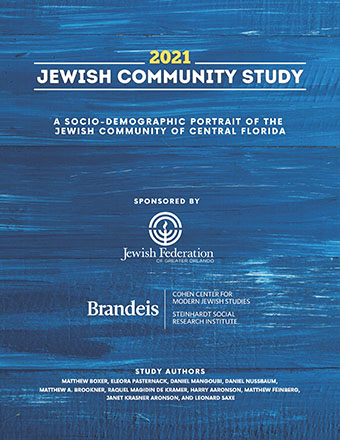
November 2021
The 2020-21 Central Florida Jewish Community Study is the first in-depth examination of the size and characteristics of the Jewish community in Orlando and the surrounding area since 1993. The study provides a comprehensive portrait of the region's 51,400 Jews, their families, and their Jewish behaviors, affiliations, attitudes, and connections to the organized Jewish community. Its findings should help the Jewish community of Central Florida make critical decisions about the trajectory of Jewish life in the region in the coming decade.
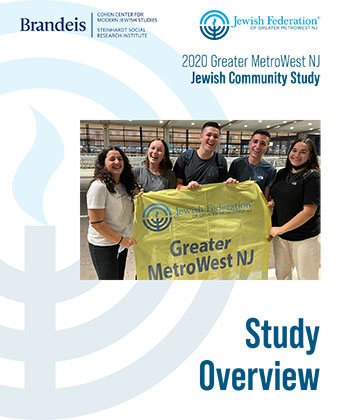
November 2021
The 2020 Greater MetroWest Jewish Community Study creates a comprehensive portrait of the characteristics, attitudes, and behaviors of the Jewish community in Greater MetroWest New Jersey and highlights data and findings that will be useful for communal planning. The study consists of topic reports, an overview (including summary of methodology), and a report of key findings.
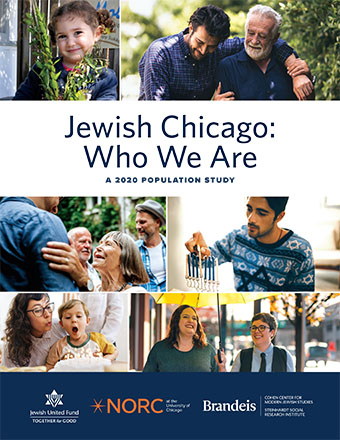
October 2021
The Jewish population of Chicago has grown modestly since 2010: 319,600 Jewish adults and children live in 175,800 Jewish households. By providing detailed data about the diversity of Jewish life and the well-being of community members, the comprehensive study will serve as the springboard for Chicago organizations and agencies to develop programs and policies to better meet community needs and interests.
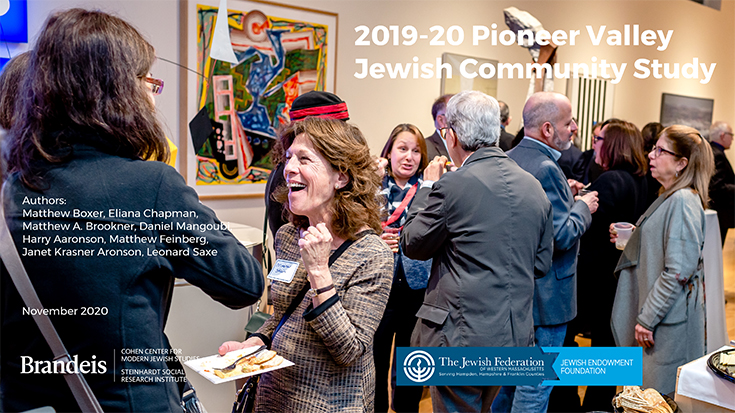
November 2020
The 2019-20 Pioneer Valley Jewish Community Study provides data about the the 12,200 Jewish households in the Pioneer Valley that can be used by communal organizations and their leadership to design programs and policies that support and enhance Jewish life. The study describes community members’ participation in Jewish communal life, their Jewish activities, and their attitudes about Judaism and Israel.
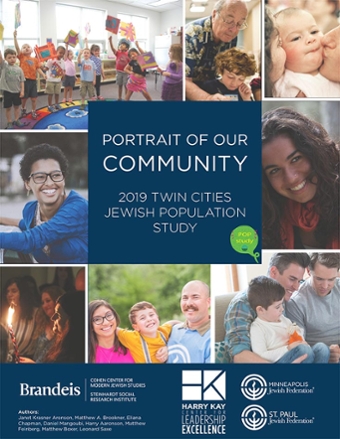
August 2020
The 2019 Twin Cities Jewish Community Study estimates the number of Jewish individuals in the community and the number of non-Jewish adults and children who are part of the region’s 34,500 Jewish households. The study also creates a comprehensive portrait of the characteristics, attitudes and behaviors of the population.
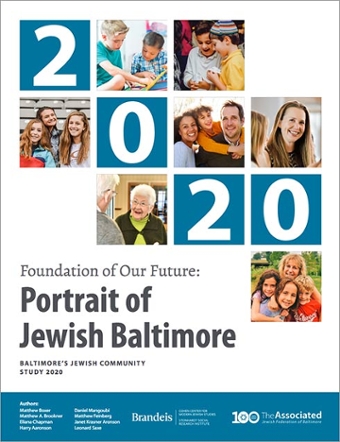
May 2020
The Baltimore 2020 Jewish Community Study provides a snapshot of the community and the ways in which members of Baltimore’s 46,700 Jewish households engage with Jewish life. The study estimates the size and characteristics of the Jewish population of the catchment area under the purview of The Associated and generates findings that could help Jewish organizations in Baltimore plan for the next decade and serve the Jewish community as effectively as possible.
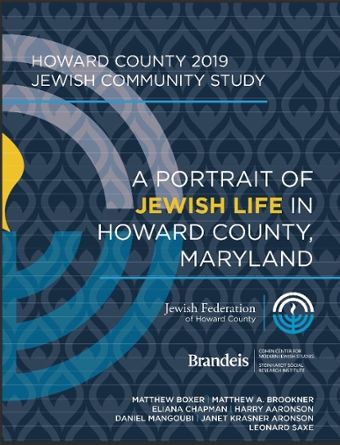
March 2020
The 2019 Howard County Jewish Community Study provides valid data about the 9,100 Jewish households in Howard County, MD, that can be used by communal organizations and their leadership to design programs and policies that support and enhance Jewish life. The study describes community members’ participation in Jewish communal life, their private Jewish activities, and their attitudes about Judaism and Israel.
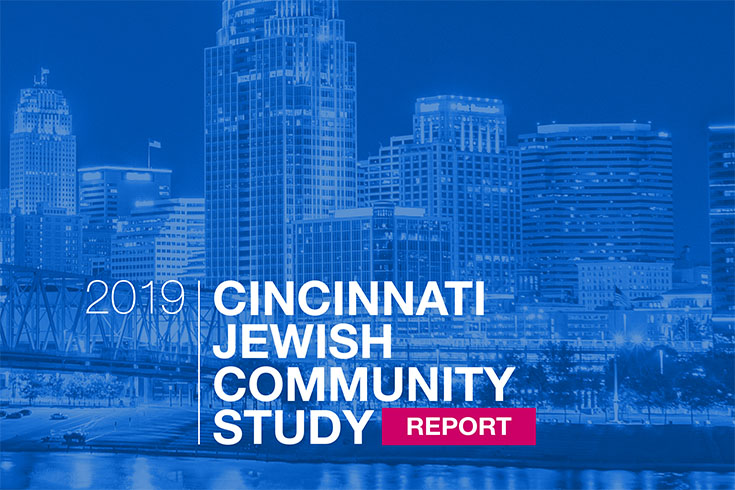
January 2020
The 2019 Greater Cincinnati Jewish Community Study estimates the number of Jewish adults in the community and the number of non-Jewish adults and children who are part of those households. The study also creates a comprehensive portrait of the characteristics, attitudes, and behaviors of that population. The study provides national and historical context by considering trends and data in the United States and where possible, comparisons to Greater Cincinnati in 2008.
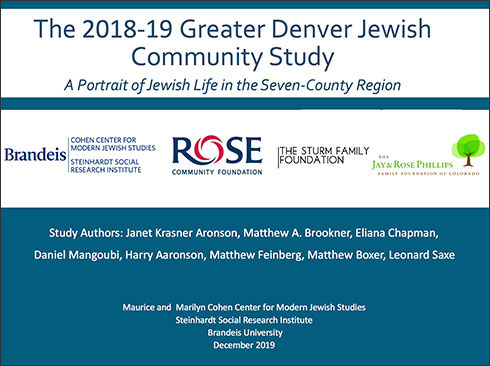
January 2020
The 2018-19 Greater Denver Area Jewish Community Study employed innovative state-of-the-art methods to create a comprehensive portrait of the characteristics, attitudes and behaviors of present-day Greater Denver Jewry. The study focuses on the Jewish community in Adams, Arapahoe, Boulder, Broomfield, Denver, Douglas and Jefferson Counties.
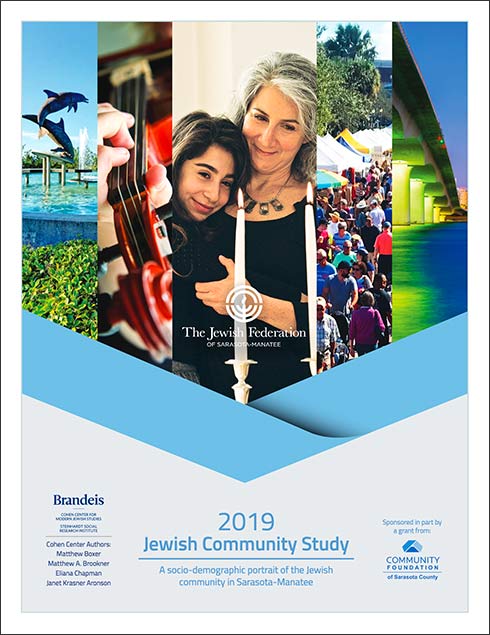
November 2019
The 2019 Sarasota-Manatee Jewish Community Study provides a detailed socio-demographic portrait of the regional Jewish community and describes community members’ participation in Jewish communal life, their private Jewish activities and their attitudes about Judaism and Israel.
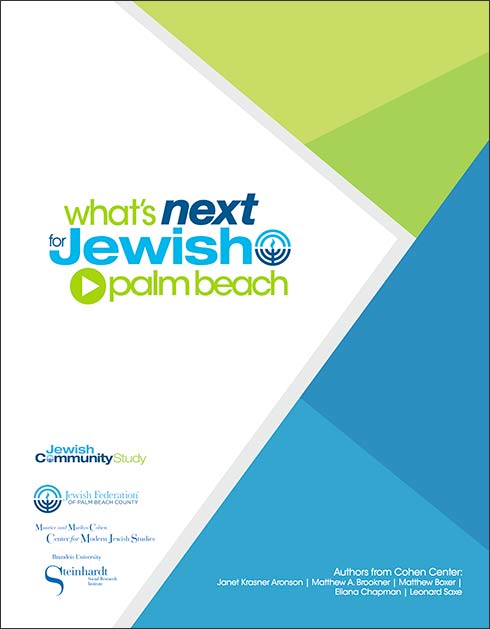
May 2019
Conducted on behalf of the Jewish Federation of Palm Beach County, the 2018 Greater Palm Beaches Jewish Community Study estimates the size of the Jewish community, describes its demographic characteristics, and examines its attitudes toward community institutions, programs and services. The report also creates a portrait of the multifaceted cultural, communal and religious expressions of Judaism that constitute Jewish engagement.
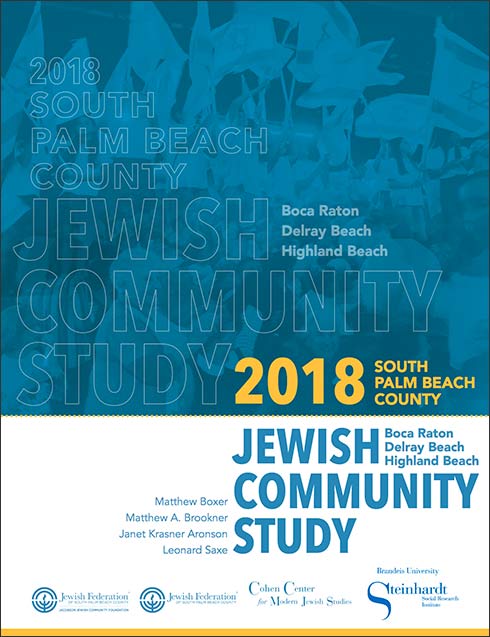
November 2018
Conducted on behalf of the Jewish Federation of South Palm Beach County, the 2018 South Palm Beach County Jewish Community Study was developed to help communal leaders, planners and residents better understand the size and character of their community. Interviews with over 2,100 Jewish households residing in South Palm Beach County form the basis of the report.
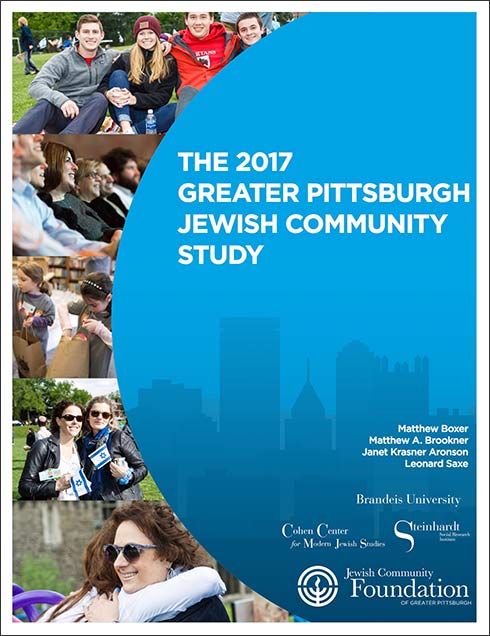
February 2018
The 2017 Greater Pittsburgh Jewish Community Study provides a detailed socio-demographic portrait of the Pittsburgh-area Jewish community and describes community members’ participation in Jewish communal life, their private Jewish activities and their attitudes about Judaism and Israel.
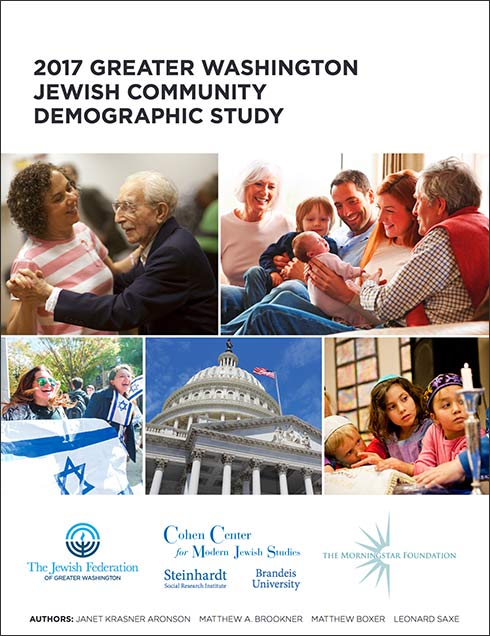
February 2018
The 2017 Greater Washington, DC Jewish Community Demographic Study provides an up-to-date description of the size and character of DC-area Jewish adults, children, and households. Interviews with over 6,600 Jewish households residing in the District of Columbia, Northern Virginia and Suburban Maryland form the basis of the report.
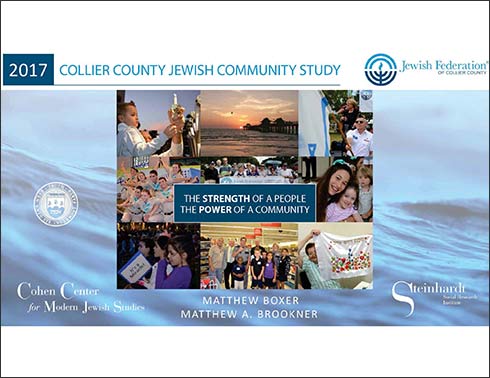
In 2017, the Jewish Federation of Collier County sponsored the first-ever representative sample survey of the Jewish community of Naples, Florida and the surrounding area. The study includes a population estimate; findings on the demography, ritual behavior, affiliations, volunteer activities and geographic profile of the population; and descriptions of the various ways community members participate in Jewish life.
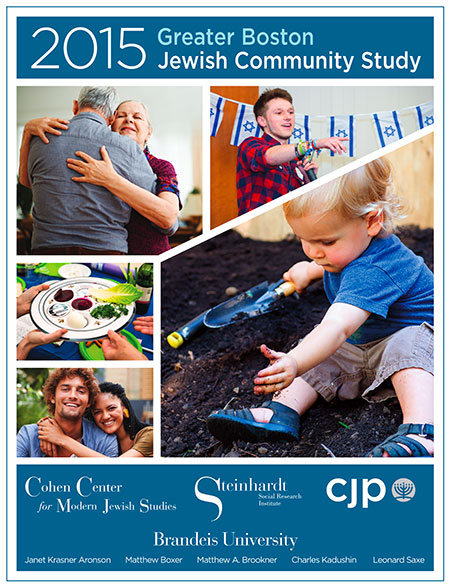
November 2016
The 2015 Greater Boston Jewish Community Study describes the size and character of Boston-area Jewry. Included in the study are demographic findings and patterns of Jewish engagement.
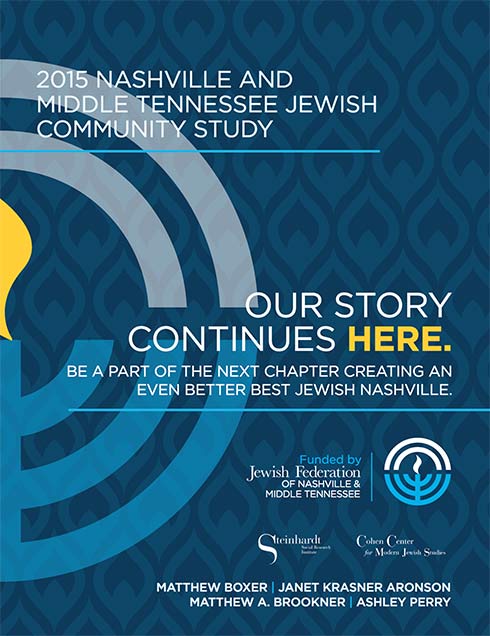
May 2016
This community study documents a slowly but steadily growing community of Jews. At its core, the Jewish community of Nashville and Middle Tennessee is comprised of a small, tight-knit group of highly involved individuals who participate in many aspects of Jewish life.
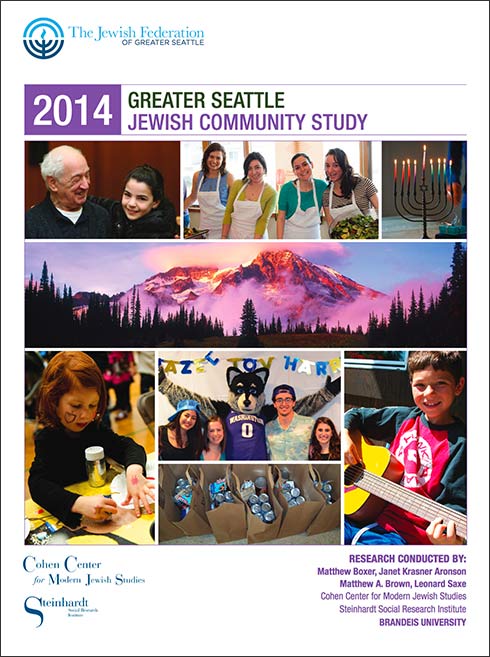
January 2015
The 2014 Greater Seattle Jewish Community Study provides an up-to-date description of the size and character of Seattle-area Jewry. Included in the study are demographic findings, information on the religious background and geographic profile of Greater Seattle’s Jewish population as well as descriptions of participation in Jewish life and volunteer activities. The narrative is supplemented with community members’ own words on topics related to Jewish identity, diversity and community resources. The report also includes special sections devoted to issues confronting families with children, young adults, senior adults, inmarried and intermarried couples, and synagogue members.
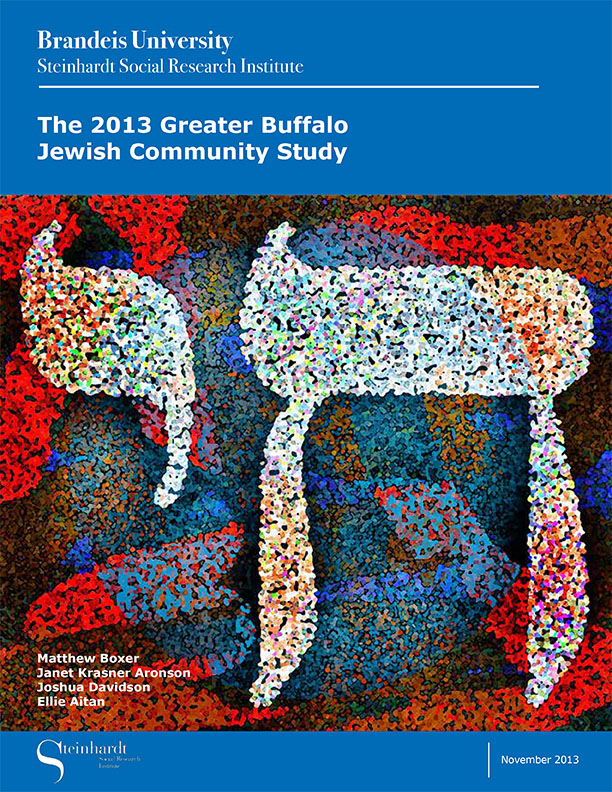
January 2014
This study of Greater Buffalo found a Jewish community comprised of 5,770 households. These households include 9,800 Jewish adults and 2,250 Jewish children, with an additional 1,000 non-Jewish adults and 200 non-Jewish children. On average, the community is older than the U.S. Jewish population as a whole, but it also includes families with children of preschool and day care age, multiple options for supplementary and day schools, and JCC family activities. A challenge confronting the Buffalo Jewish community going forward is to find ways to maintain the loyalty of long-standing members while being welcoming to those less involved, whether they are newcomers to the area or newly seeking connections to the Jewish community.
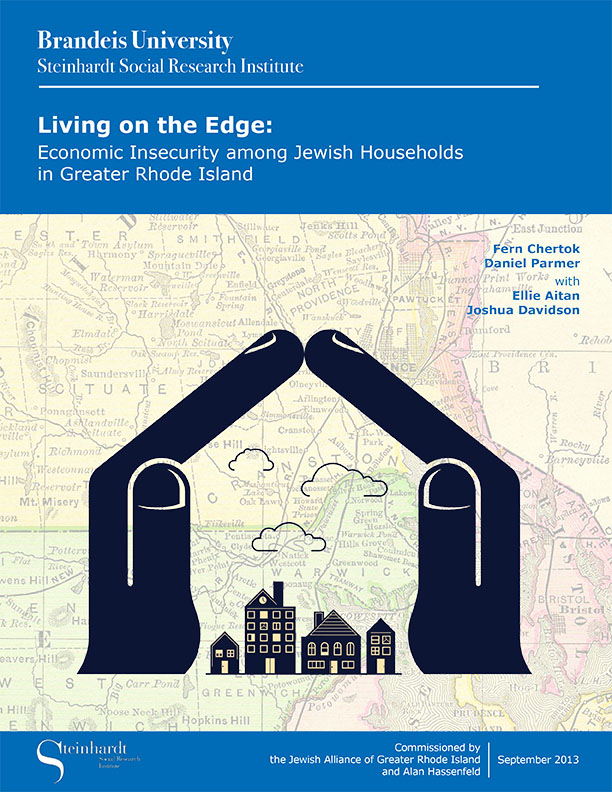
October 2013
Commissioned by The Jewish Alliance of Greater Rhode Island, the goal of this report was to better understand the economic challenges and needs of Jewish households in the Alliance catchment area communities. Researchers examined macro-level indicators, reviewed the services currently available in Rhode Island communities, collected systematic data about requests for assistance at the synagogue level, and conducted indepth interviews with individuals currently experiencing economic hardship.
Read the oped: Living on the edge: Economic vulnerability in the Jewish community.
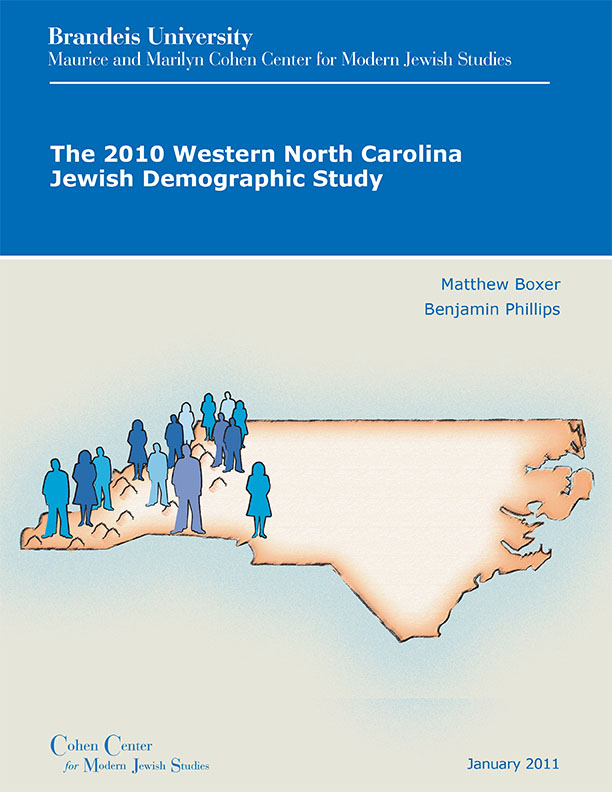
January 2011
This report describes the Jews of Western North Carolina, the ways in which they engage in Jewish communal life, the services that are provided by the communities, and the communities’ needs. It is intended to help the communities examine their own priorities and make decisions about resource allocation and program development and maintenance.
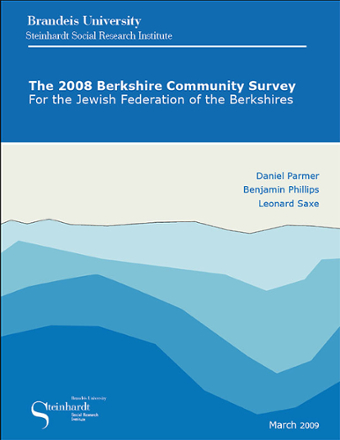
March 2009
A socio-demographic study of the Berkshire Jewish population, this project examines the community's connections to, and engagement with, Jewish life and, in particular, provides information regarding special sub-groups of the population, such as the intermarried, seniors, Jewish young adults and part-time residents of the Berkshires.
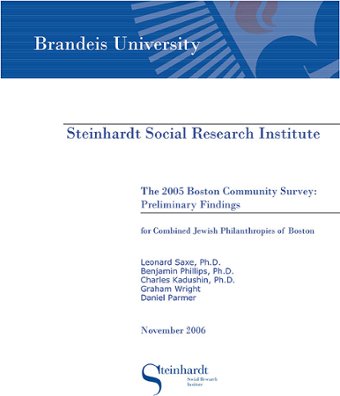
November 2006
The 2005 Boston Community Survey estimates the size of the Boston Jewish population and examines its demographic characteristics and the challenges posed by several of those findings, particularly those concerning age and economic vulnerability. The report then explores intermarriage and the upbringing of children in intermarried families. Finally, the report discusses the many varied connections to Jewish life, through ritual practice, membership in Jewish organizations, education of Jewish children, philanthropy and volunteering, and ties to Israel.
Journal Articles and Podcasts
Aronson, J.K., Brookner, M.A., Boxer, M., Nussbaum, D., de Kramer, R.M., Saxe, L. (2024). Using Denominational Identity to Understand Jewish Engagement. In: Dashefsky, A., Sheskin, I.M. (eds) American Jewish Year Book 2023. American Jewish Year Book, vol 123. Springer, Cham. https://doi.org/10.1007/978-3-031-67478-5_2
Judaism Unbound Podcast episode 337 with Janet Krasner Aronson (2022). "Let’s End “Good Jew”/“Bad Jew." Discussion of the 2021 Study of Jewish Los Angeles.
Aronson, J. K., Saxe, L., Kadushin, C., Boxer, M., & Brookner, M. A. (2019). A New Approach to Understanding Contemporary Jewish Engagement. Contemporary Jewry doi.org/10.1007/s12397-018-9271-8
Lustig, J. (Host). (2018, April 22). Jewish Community Studies with Matthew Boxer [Audio podcast]. Retrieved from Jewish History Matters podcast
Aronson, J.K., Boxer, M., & Saxe. L. (2016). ‘All Politics is Local’: Challenges in the Study of Local Jewish Communities. Contemporary Jewry 36 (3): 361–380
Boxer, M. (June 2007). Community Size and Identity. Sh’ma: A Journal of Jewish Responsibility 37: 7-8.